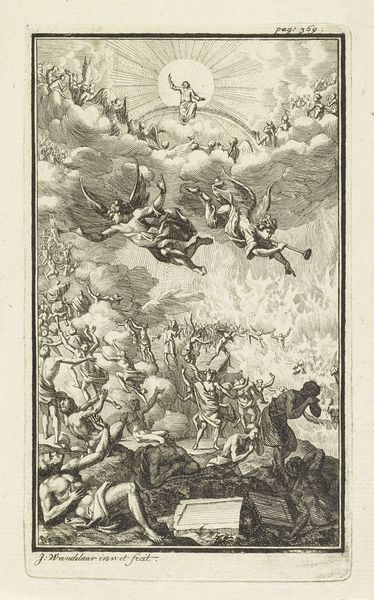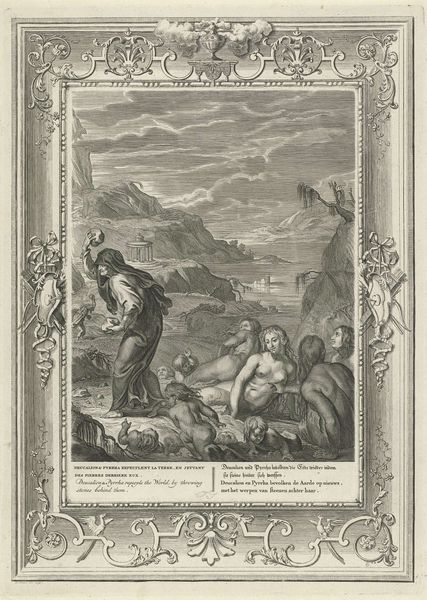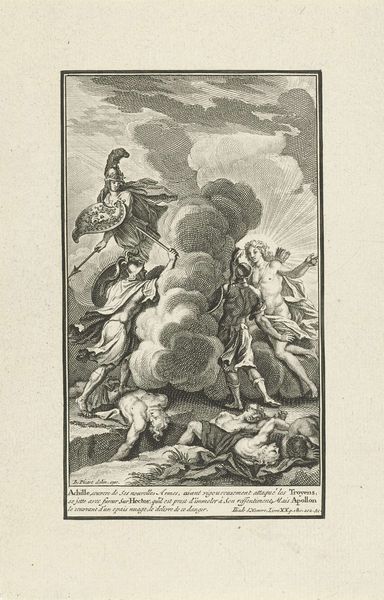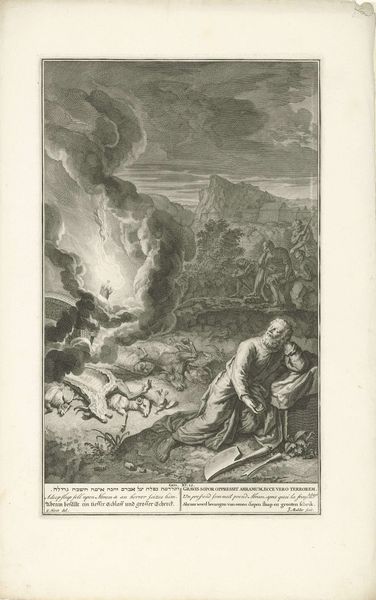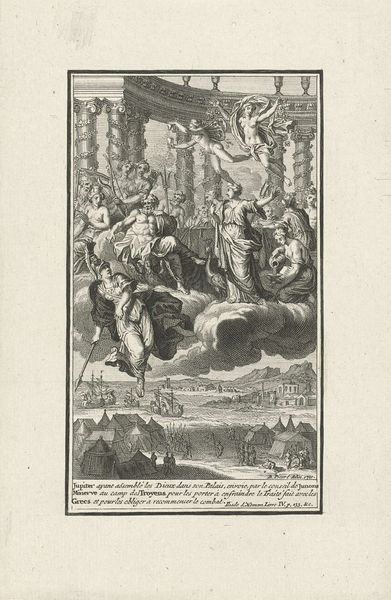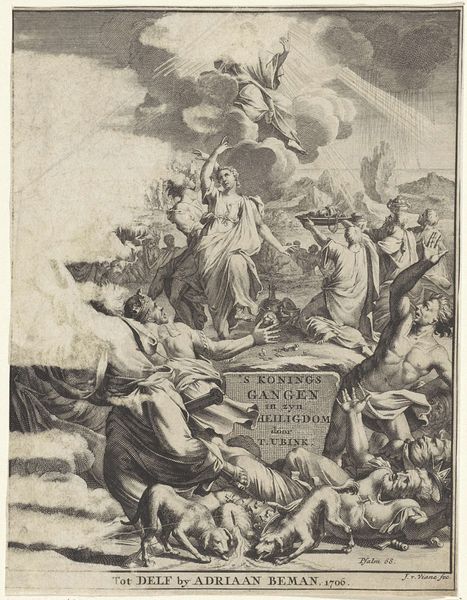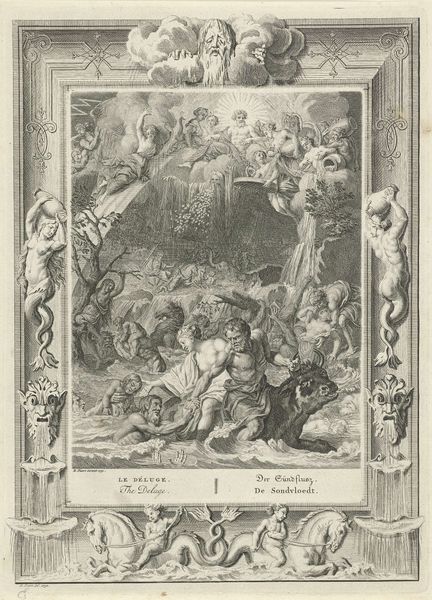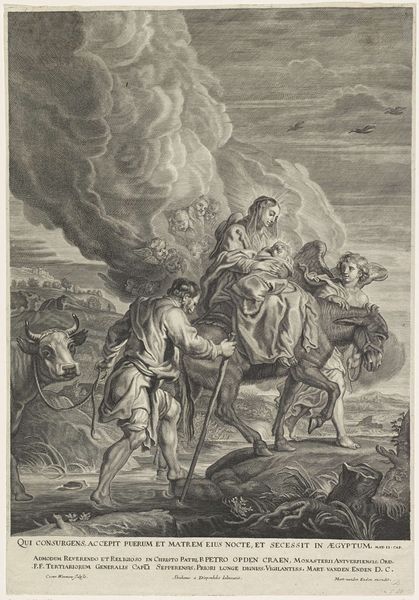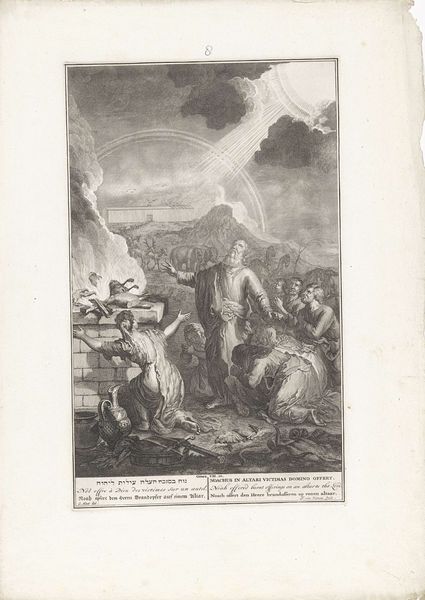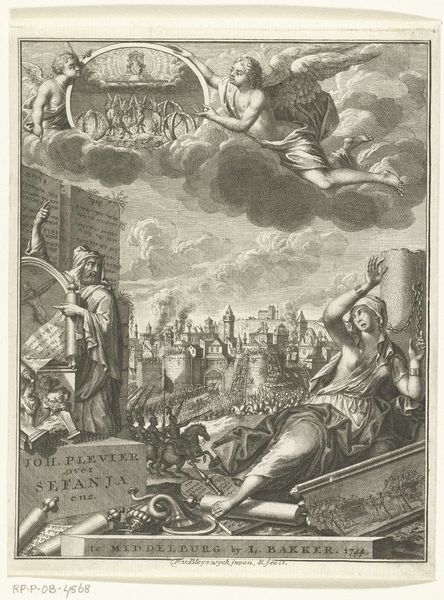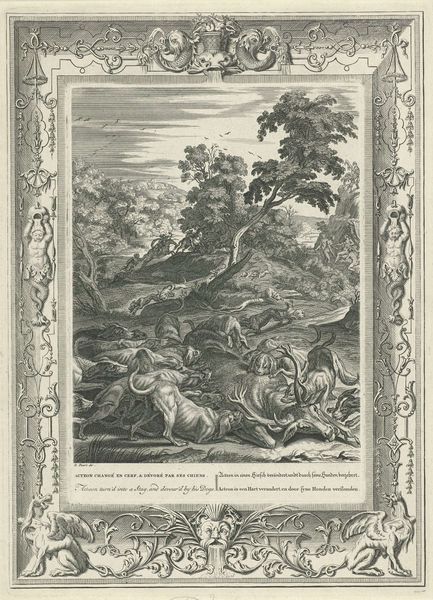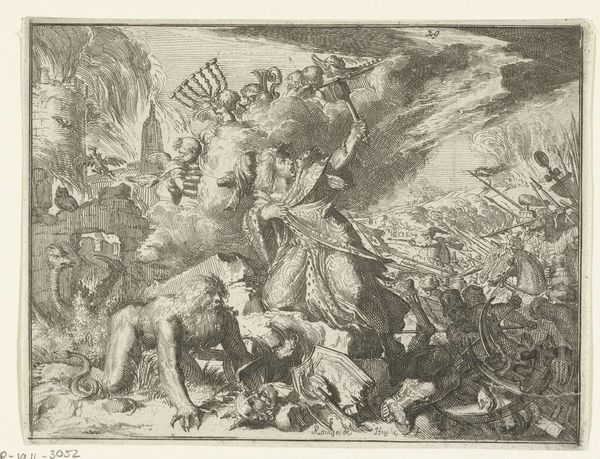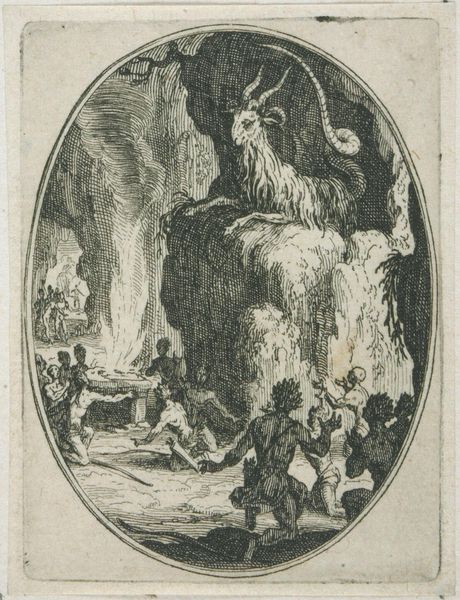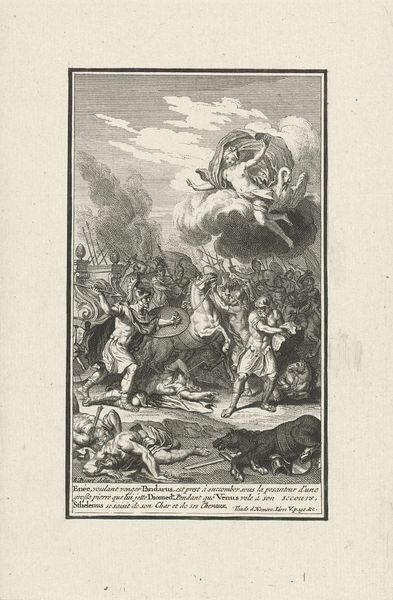
engraving
#
baroque
#
figuration
#
line
#
history-painting
#
engraving
Dimensions: height 360 mm, width 255 mm
Copyright: Rijks Museum: Open Domain
Bernard Picart created this print of 'The Death of Hercules' using etching in the Netherlands, sometime around the turn of the 18th century. The image depicts Hercules, the classical hero, dying on a pyre, while Jupiter approaches in his chariot to bring him to Olympus. Hercules was an exemplar of masculine virtue, so to understand this image, we must ask what virtue meant in the Dutch Republic. This etching, like other prints, was made for a growing middle class. It was traded in an art market increasingly governed by dealers, academies, and museums. These institutions played a role in shaping the very definition of art and culture. The image can tell us how the merchant classes thought about the world and their place in it. To get a better sense of this, we can consult sources such as period literature, political pamphlets, and the records of art societies and academies.
Comments
No comments
Be the first to comment and join the conversation on the ultimate creative platform.
